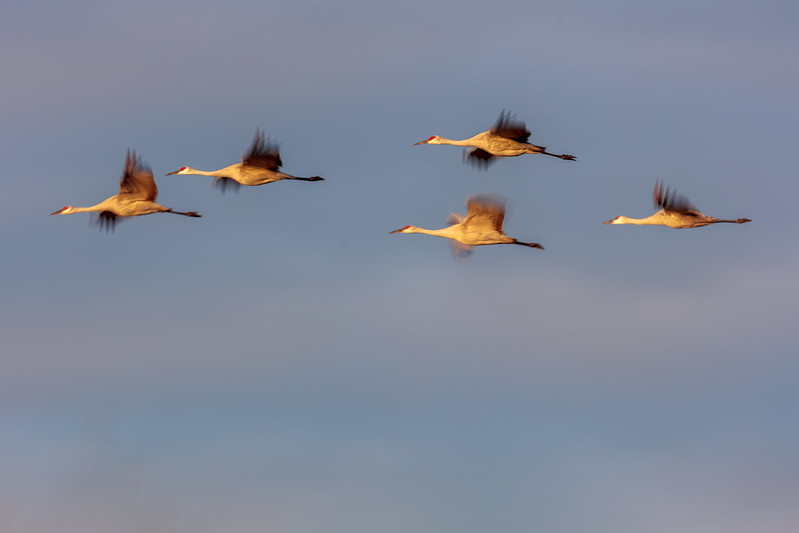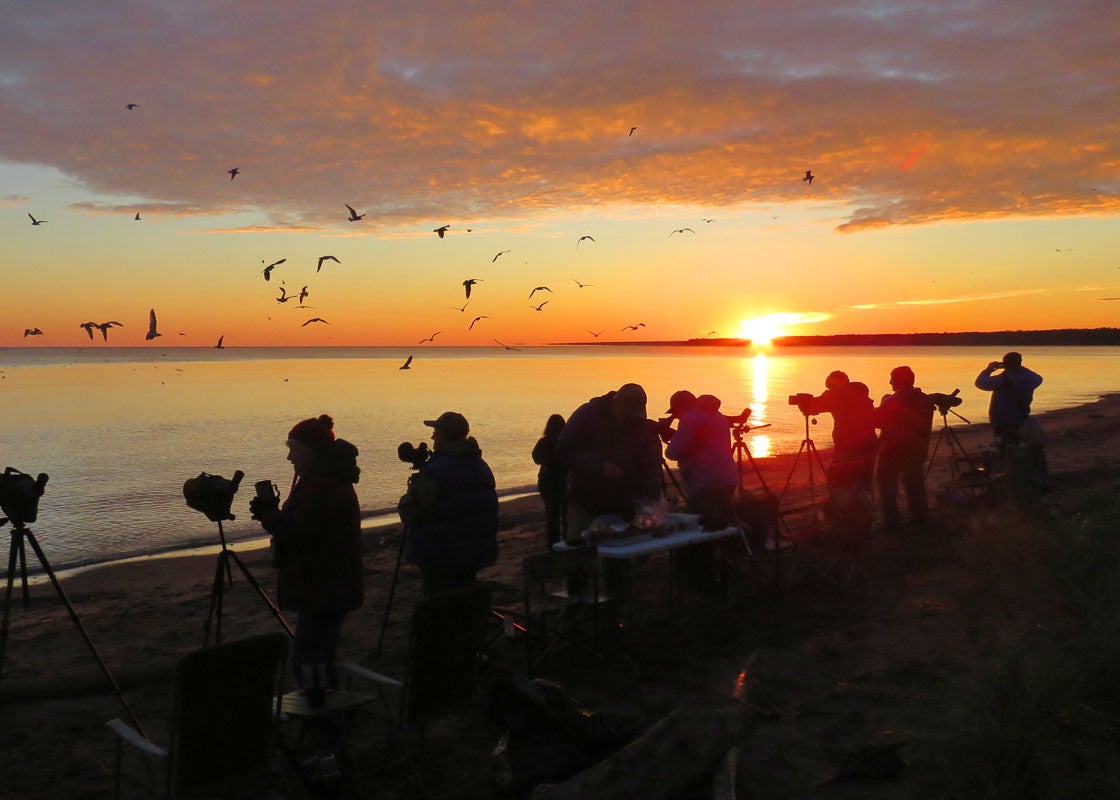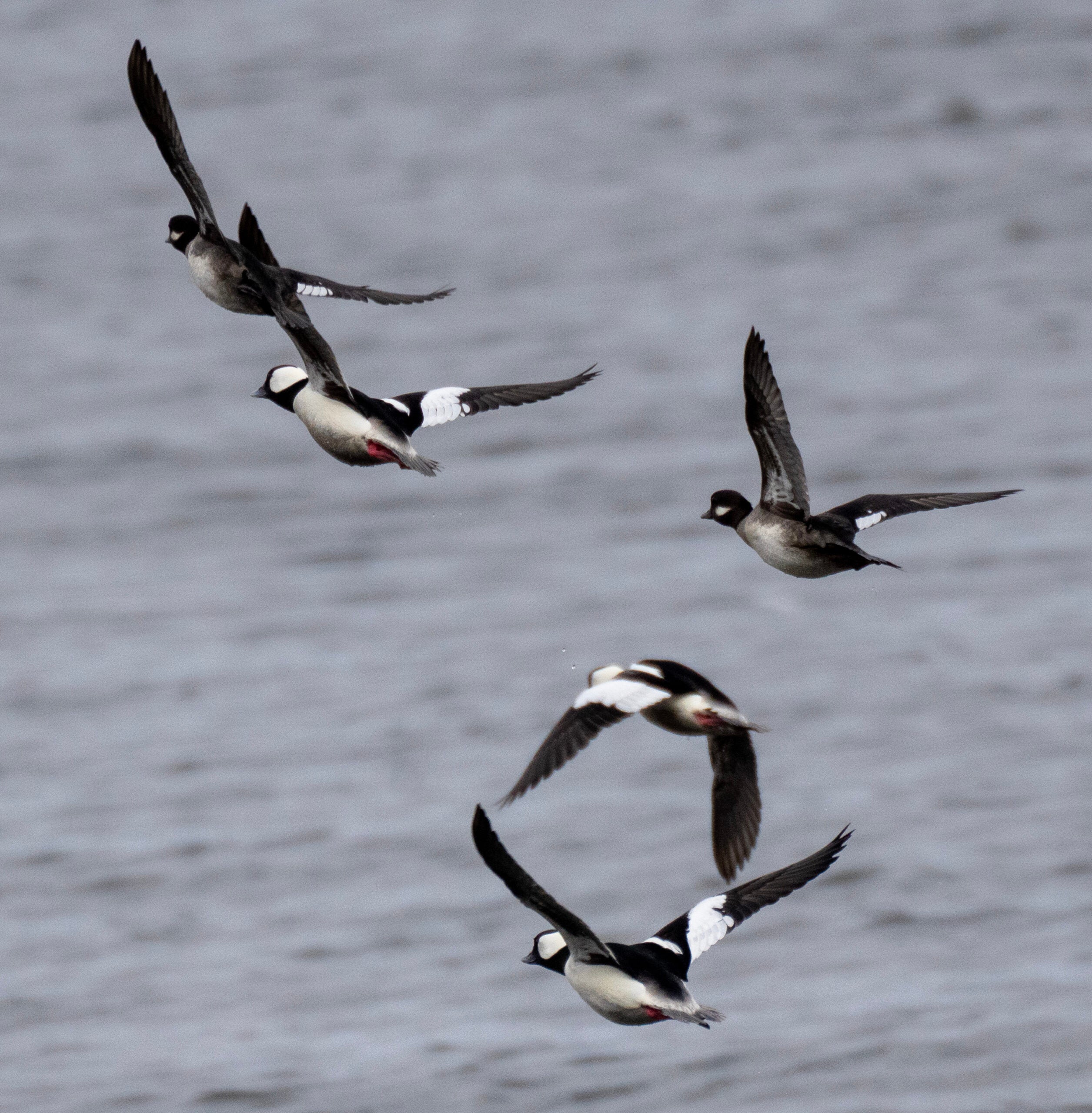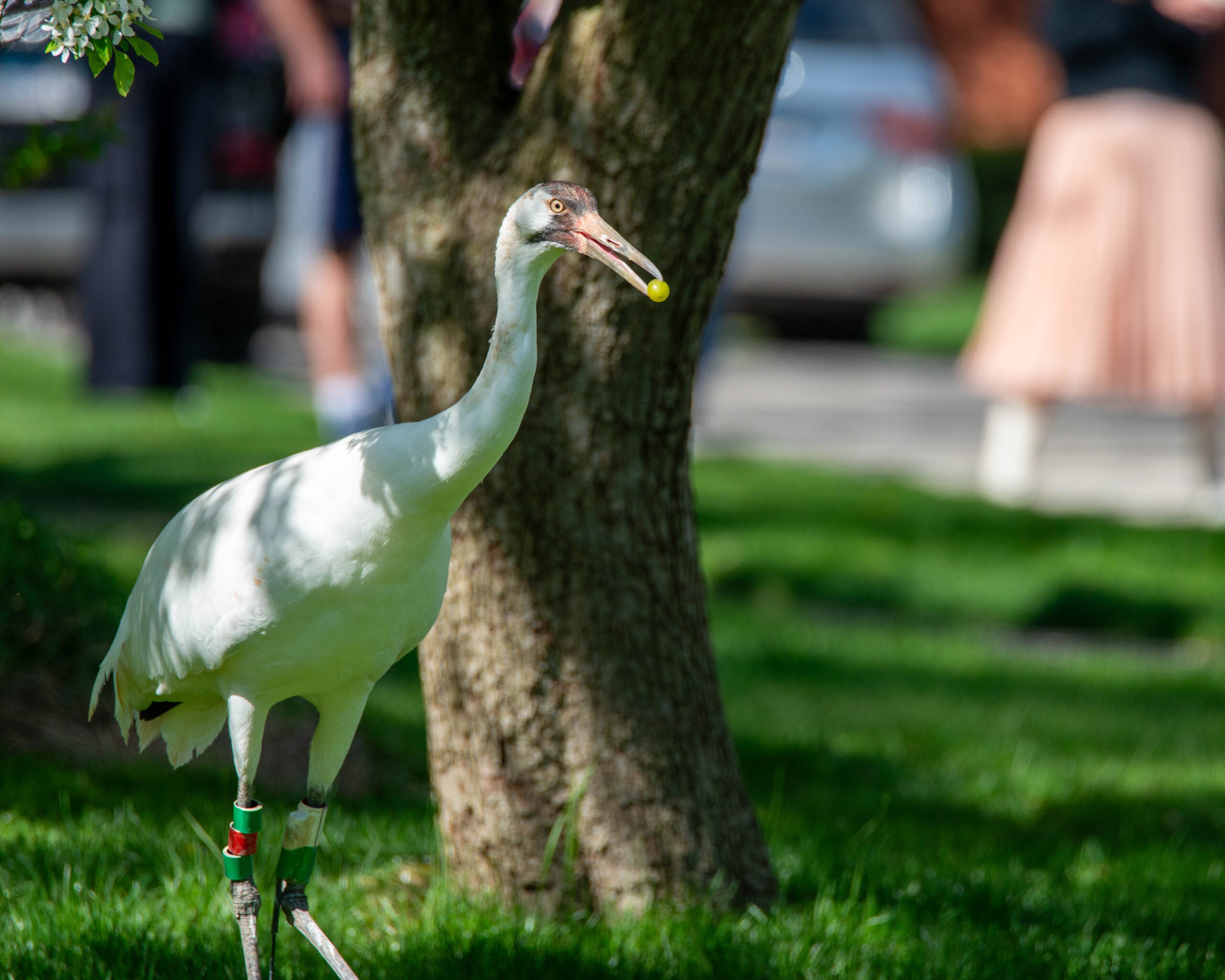Larry Meiller finds out how the cool and wet spring impacted the annual bird migration. Plus it’s fascinating to learn about the sequence of birds as they arrive in Wisconsin. Incredibly, they always come in the same order. Plus, places to go to see and enjoy birds in early summer around the state.
Featured in this Show
-
Spring Bird Migration Is At Its Peak In Wisconsin
Every spring is different from the last, and that mean that the spring bird migration is different as well. Here in Wisconsin, after a long, cold winter, warmer weather was slow to arrive, which made for later travels for the birds that pass through the Badger state.
Bill Volkert, a naturalist and a retired wildlife educator at Horicon Marsh International Education Center, said to raise both awareness of birds and funding for conservation efforts, he took part in this year’s Great Wisconsin Birdathon. In its third year, the event is sponsored by the Natural Resources Foundation of Wisconsin, the Wisconsin Society for Ornithology and the Wisconsin Bird Conservation Initiative (WBCI).
Here is Volkert’s account of his May 18 outing at Horicon Marsh, followed by the list of 133 species that he observed.
I conducted the birdathon on Sunday, May 18th. I started at 4:00 am on the north end of the marsh trying to get a number of birds that tend to call during the night, such as American bittern, black-crowned night-heron, sora and Virginia rails, among others. By sunrise I already had 40 species. I then moved to the woodlots to search for songbirds and found a nice variety of warblers which were feeding very low due to the lack of leaves on the trees, which also made them easy to see. I checked a few other wooded areas and searched the open fields and wetlands in between. By 6:00 am I had 50 species and by 7:00 am I had tallied 80 species.
Birds were actively singing during the morning hours which made them easy to identify. They had been rather quiet for the past several days due to the cool temperatures, lack of insect food and the fact that they were saving their energy for feeding with little extra to spare for singing. I took a drive across Hwy 49 to search for water birds, but ducks were sparse and shorebirds were absent due to the high water. Shorebirds can easily make or break a big day count at Horicon Marsh and I was conservative with my estimate of how many bird species I might find due to the wet spring. This proved to be true this year and I only found 6 species of shorebirds during the entire day. At least I found one mudflat on the east side of the marsh that produced a few species.
Next I drove the area around Northern Road and Point Road where I found several grassland and upland species and by 8:30 am I had 100 species. By this time I had found most of the “easy-to-find” species along with several specialties, so I knew things would start to slow down as it became increasingly more difficult to find some of the rarer species that might be present at this time of year. I drove the Main Dike area and also searched a few more woodlots and by 10:30 am I had 110 species. It was now becoming warm with a steady breeze and the birds were noticeably quiet by this time of day. Songbirds were barely singing by this time, but I continued to try to find not only uncommon species to add to the list, but also several common ones that I would have thought I should have had by this time. However, I found that I still didn’t have eastern phoebe, northern flicker, green heron (which I never did find for the day) or kingfisher. I drove by some residential areas with taller spruce trees to find house finch, which I found singing and then returned to the area I started out at to see if I could add anything more.
I took a rest in the middle of the afternoon and then went back out for the last 2 1/2 hours of the day when birds might become a bit more active again as temperatures cooled and the wind died down. By 8:00 pm I had tallied 133 species – not bad for the day but certainly not a record for Horicon Marsh. Restricting my search to one single large property did limit the species I might find, but it demonstrated once again the importance of the diverse habitat for birds and other wildlife that Horicon Marsh provides.
Among some of the specialties for the day were whooping crane, trumpeter swan, American white pelican (all species that were almost non-existent at Horicon Marsh 10 to 15 years ago), American bittern, bald eagle, yellow-bellied and willow flycatchers, orchard oriole, yellow-headed blackbirds and 24 species of warblers.Here is the list of the 133 bird species that Volkert saw between 4:00 am and 8:00 pm on May 18, 2014 at Horicon Marsh:
- Canada goose
- Trumpeter swan
- Wood duck
- Gadwall
- Mallard
- Blue-winged teal
- Northern shoveler
- Redhead
- Lesser scaup
- Hooded merganser
- Ruddy duck
- Wild turkey
- Pied-billed grebe
- American white pelican
- Double-cr. cormorant
- American bittern
- Great blue heron
- Great egret
- Black-crested night heron
- Turkey vulture
- Osprey
- Bald eagle
- Northern harrier
- Red-tailed hawk
- Virginia rail
- Sora rail
- American coot
- Sandhill crane
- Whooping crane
- Black-bellied plover
- American golden plover
- Semipalmated plover
- Killdeer
- Least sandpiper
- American woodcock
- Herring gull
- Black tern
- Forster’s tern
- Rock dove
- Mourning dove
- Chimney swift
- Ruby-throated hummingbird
- Belted kingfisher
- Red-bellied woodpecker
- Yellow-bellied sapsucker
- Downy woodpecker
- Hairy woodpecker
- Northern flicker
- Olive-sided flycatcher
- Eastern Wood pewee
- Yellow-bellied flycatcher
- Willow flycatcher
- Least flycatcher
- Eastern phoebe
- Great-crested flycatcher
- Eastern kingbird
- Yellow-throated vireo
- Warbling vireo
- Red-eyed vireo
- Blue jay
- American crow
- Horned lark
- Purple martin
- Tree swallow
- Rough-winged swallow
- Bank swallow
- Cliff swallow
- Barn swallow
- Black-capped chickadee
- Red-breasted nuthatch
- White-breasted nuthatch
- House wren
- Sedge wren
- Marsh wren
- Blue-gray gnatcatcher
- Eastern bluebird
- Veery
- Gray-cheeked thrush
- Wood thrush
- American robin
- Gray catbird
- Brown thrasher
- European starling
- Cedar waxwing
- Ovenbird
- Northern waterthrush
- Golden-winged warbler
- Blue-winged warbler
- Black & white warbler
- Tennessee warbler
- Orange-crowned warbler
- Nashville warbler
- Mourning warbler
- Common yellowthroat
- American redstart
- Cape May warbler
- Northern parula
- Magnolia warbler
- Bay-breasted warbler
- Blackburnian warbler
- Yellow warbler
- Chestnut-sided warbler
- Blackpoll warbler
- Palm warbler
- Pine warbler
- Yellow-rumped warbler
- Black-throated green warbler
- Wilson’s warbler
- Eastern towhee
- Chipping sparrow
- Clay-colored sparrow
- Field sparrow
- Savannah sparrow
- Henslow’s sparrow
- Song sparrow
- Swamp sparrow
- White-throated sparrow
- White-crowned sparrow
- Scarlet tanager
- Northern cardinal
- Rose-breasted grosbeak
- Indigo bunting
- Bobolink
- Red-winged blackbird
- Eastern meadowlark
- Yellow-headed blackbird
- Common grackle
- Brown-headed cowbird
- Orchard oriole
- Baltimore oriole
- House finch
- American goldfinch
- House sparrow
Episode Credits
- Larry Meiller Host
- Judith Siers-Poisson Producer
- Kim Grveles Guest
- Bill Volkert Guest
Wisconsin Public Radio, © Copyright 2025, Board of Regents of the University of Wisconsin System and Wisconsin Educational Communications Board.




